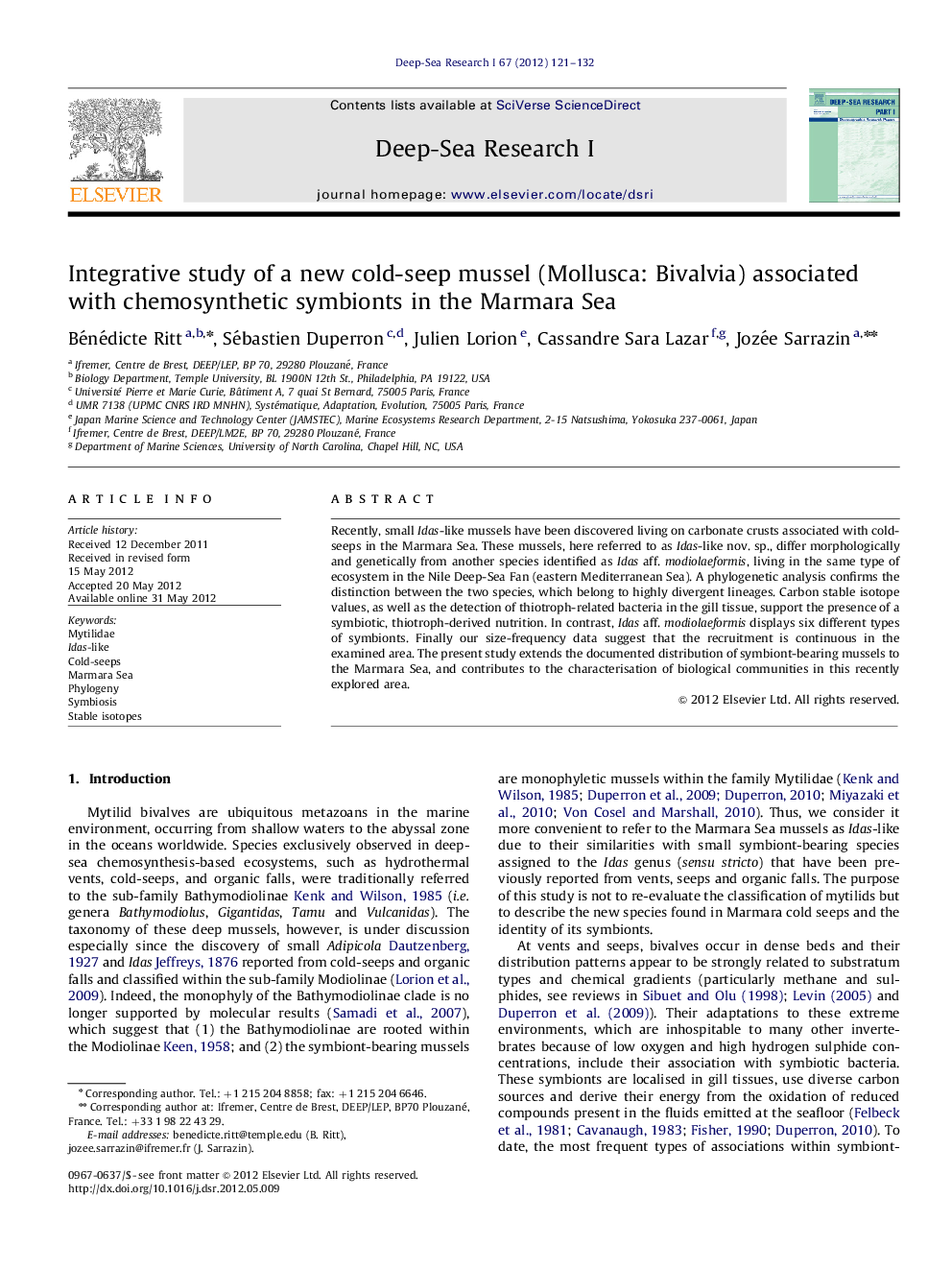| Article ID | Journal | Published Year | Pages | File Type |
|---|---|---|---|---|
| 4534676 | Deep Sea Research Part I: Oceanographic Research Papers | 2012 | 12 Pages |
Recently, small Idas-like mussels have been discovered living on carbonate crusts associated with cold-seeps in the Marmara Sea. These mussels, here referred to as Idas-like nov. sp., differ morphologically and genetically from another species identified as Idas aff. modiolaeformis, living in the same type of ecosystem in the Nile Deep-Sea Fan (eastern Mediterranean Sea). A phylogenetic analysis confirms the distinction between the two species, which belong to highly divergent lineages. Carbon stable isotope values, as well as the detection of thiotroph-related bacteria in the gill tissue, support the presence of a symbiotic, thiotroph-derived nutrition. In contrast, Idas aff. modiolaeformis displays six different types of symbionts. Finally our size-frequency data suggest that the recruitment is continuous in the examined area. The present study extends the documented distribution of symbiont-bearing mussels to the Marmara Sea, and contributes to the characterisation of biological communities in this recently explored area.
► First description of a thiotrophic mussel species discovered associated with cold-seep ecosystems in the Marmara Sea. ► Idas-like nov. sp. is morphologically different from Idas aff. modiolaeformis of the eastern Mediterranean Sea. ► Idas-like nov. sp. represents a new lineage in the Mytilidae tree. ► Both Idas species diverged a long time before both species colonised the Mediterranean Sea seeps.
